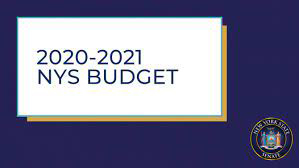City Politics
State budget Includes $2.4 Billion for Landlords and Tenants

Tenants and landlords who lost income during the coronavirus pandemic, may see relief. The new state budget is making $2 billion available through the new state budget agreement reached by state lawmakers last week.
The spending plan includes $2.3 billion in federal money, plus another $100 million from the state for those who have been unable to pay their rents due to income losses or other hardships during the coronavirus pandemic.
The state’s Office of Temporary and Disability Assistance will administer the program, with an immediate goals of getting 35% of the funds to recipients who most need it in the next 30 days.
Tenants who qualify can get up to 12 months of back rent and back utilities for outstanding bills since March 13, 2020. Tenants who pay more than 30% of their income in rent — so-called “rent-burdened” tenants — can also get three months’ worth of future rent payments.
The money goes directly to the landlord on behalf of tenants. The moment a landlord receives the first payment on behalf of a tenant, he or she is prohibited from raising rent costs for at least 12 months. Landlords and tenants do not need to repay the rental assistance except in cases of fraud or duplication.
The landlord is also prohibited from evicting that tenant for at least 12 months, except in a very particular case: A landlord can decline to extend a lease in a building with four or fewer units if the landlord or a close family member intends to move into the apartment.
To receive rent relief, a tenant must meet all of the below criteria:
Qualified for unemployment assistance, lost household income or faced other financial hardship directly or indirectly due to the pandemic
Demonstrated a risk of experiencing homelessness or housing instability
Generated income at or below 80% of the area median income, adjusted for household size. (Onondaga County’s median household income is about $61,000, according to Census figures.)
The program will prioritize tenants who faced the most hardship and who are in certain categories during the first 30 days. Those people include:
Households whose income is at or below 50% of the area median income with at least one person who has not been employed for at least 90 days before applying
Tenants in mobile home parks who are facing outstanding rent bills for the land where the home sits
Households with victims of domestic violence, survivors of human trafficking and veterans
Households with pending eviction cases
Households in communities disproportionately affected by the pandemic.
Tenants who live in a building with 20 or fewer units that is owned by a landlord who owns 20 or fewer units.
According to Syracuse.com, “the bill language does not specify how landlords or tenants can apply for the new rental relief program. However, it does require local governments to do outreach to help people apply and to designate a non-profit organization that can guide tenants and landlords through the process.”

